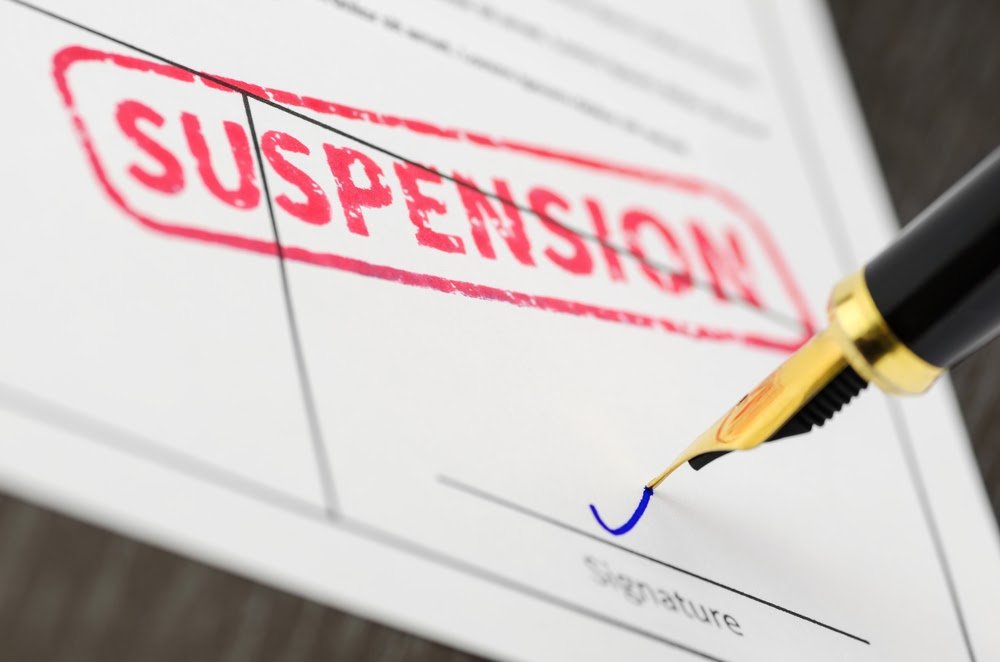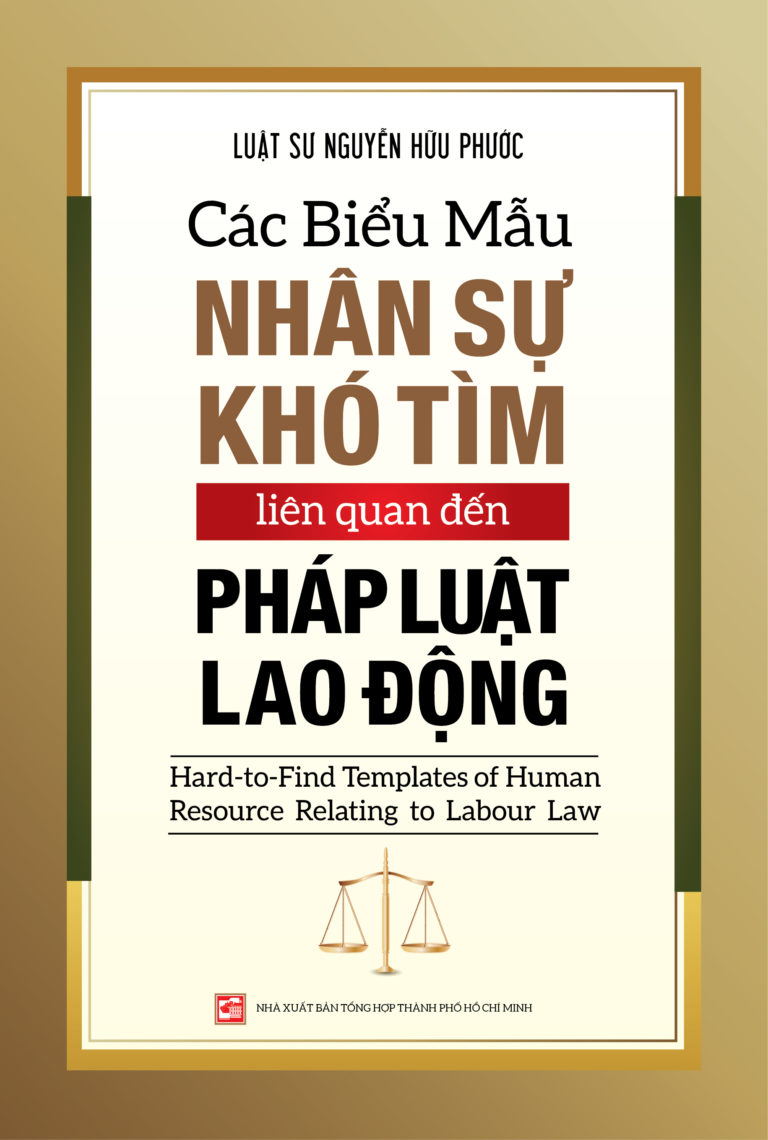Suspension of Labour Contract: A Lifebelt to Keep Afloat Enterprises During the COVID-19 Storm?
(Tran Thi Huong and Attorney Nguyen Huu Phuoc – Phuoc & Partners)
The time when enterprises consider whether employees work at home or to work on-site at the workplaces was long gone. Under the strict social distancing measures of the Government, enterprises are now facing more difficulties in figuring out how to cut manufacturing and business costs, collect customer debts, make sure there are enough work for employees during the pandemic.
Being in a tight corner, many enterprises have decided to initiate employees cutback such as unilateral termination of labour contracts (“LC”) due to the reason of dangerous epidemic, retrenching employees due to restructuring, change of technology, or economic reason, etc. Not to mention legal proceedings relating labour disputes in the future and the compensation that may be up to billions Vietnam Dong, the enterprises’ costs, time and efforts spent on training employees would be in vain if any of the above options is selected. Besides, launching employees cutback may cause enterprises in trouble when only one small mistake in the reuired procedures might lead to a severe consequence. Thus, to minimise losses and potential risks in the long run, enterprises should consider alternative options, for instance, suspension of LC performance.
Despite not being defined in the labour laws, the term “suspension of LC performance” may be interpreted as the case in which parties in a labour relationship suspend the performance of the signed LC for a specified period of time. Suspension of LC performance may be considered as a lifebelt for enterprises when: (i) they do not have enough jobs to be assigned to employees during social distancing periods; and/or (ii) it is impossible for employees to carry out any assigned tasks (maybe because they are not able to commute to the workplaces in order to perform the assigned tasks or maybe due to other reasons). This lifebelt will be appropriate for: (i) any enterprise operating in the field of restaurants, cafeteria which were forced to close in accordance with Directive No. 16/CT-TTg; (ii) enterprises having employees working from home do not have enough tasks for employees to handle; (iii) enterprises were forced to cease manufacturing and business activities because it is impossible to launch working from home solution and their businesses are not considered as essential (namely aviation business, clothing, leather footwear manufacturing, etc.); and (iv) enterprises having non-urgent construction sites, etc.
Suspension of LC performance indicates that employees will not have to perform their tasks and in return, enterprises are not obliged to pay salaries, bonuses, allowances, etc. for employees during the suspension periods. This “temporary farewell” will somehow help enterprises overcome the tough time and keep employees’ jobs when enterprises recover. Moreover, enterprises may also minimise risks of legal proceedings in the future as it is not a unilateral decision from one side but is based on consensus[1]. From a macro aspect, not only does this help minimise the number of enterprises being dissolved, but it also helps reduce the number of employees losing their jobs due to the COVID-19 pandemic.
Regarding the suspension period, the labour law keeps silent on the minimum or maximum duration for suspension of LC performance and impliedly allows the parties to mutually agree after considering the enterprises’ actual situation.
As the fourth wave of COVID-19 pandemic in Vietnam is getting worse day by day, it seems unfeasible at the present to forecast when the manufacturing and business activities of the enterprises will bounce back. Hence, in lieu of offering a short suspension period (from 07 – 14 days) to the employees and then negotiate to prolong the term when such period expires (if the situation is not getting better), the enterprises should suggest a period ranging from one to a few months in order to plan for the worst scenario. Because it would be much easier to ask the employees to return before the scheduled date than to negotiate an extension of the suspension.
Regarding obligations binding the parties during the suspension periods, as mentioned above, employees are not bound by responsibilities at work and enterprises are also not obliged to pay salaries, bonuses or ensure the employees’ rights and interests during such periods[2]. Regarding the cessation of work due to the dangerous epidemic, enterprises shall agree on paying salaries for employees during the first 14 days of ceasing work to ensure that is not lower than the minimum area wage rates[3]. Enterprises are entitled to suspend the LC performance without pay, hence, the amount of support will be mutually agreed by both parties or may be nil.
Practical application
In practice, there are many options that enterprises may consider under the epidemic situation, such as agreeing on: (i) reduction of the contractual working hours simultaneously with a corresponding reduction of salary; (ii) suspension of; performance; (iii) leave without pay[4]; or (iv) cessation of work. There is no ground for enterprises to select the options in which not only have potential legal risks but also cause uncomfortable for employees and waste well-trained talents while they can consider applying suspension of LC performance?
Although the labour laws keep silent on the procedural steps that enterprises shall follow when they want to suspend the LC performance, it can be seen that this process does not require the parties to hold a dialogue at the workplace, report or obtain opinion from the competent labour management agencies, the representative organisation of employees at the grassroots level. Thus, different from the case of retrenching employees due to change of structure, technology or economic reason, suspension of LC performance will be a more feasible step for enterprises under the current social distancing situation.
Of notes
- First of all, the key to suspension of LC performance is an agreement. To achieve this, depending on the available budget, enterprises can propose any reasonable amount of support to help employees cover their fundamental needs in order to overcome the tough time as well as subtly appease the employees so that they would stand side by side with the enterprises. Besides, although there are no specific provisions prescribed by the labour laws, the content of a suspension agreement and the competent person to sign the agreement are also issues that enterprises need to be aware to minimise legal risks. In principle, it is the legal representative of the enterprise who has the authority to sign the suspension agreement on the enterprise’ behalf. However, the legal representative can also authorise another person in writing to sign on his or her behalf.
So, if employees disagree on the proposal on suspension of LC performance, what should enterprises do? As aforementioned, there are many options for the enterprises to consider but still ensure the legality of those options. Although suspension of LC performance is an option with many advantages for enterprises because of its ability to minimise financial burden, however, for employees, this is an unexpected proposal as it reduces their employment income. Therefore, the enterprises also need back up plan(s) in case the employees disagree.
- Secondly, how to sign a suspension agreement. Under the current strict Directives restricting people from going out, it will be difficult for the parties to directly sign the agreement, e.g. it is hard to book a vehicle to deliver documents from one district to another due to the shipper’s fear of being fined for “nonessential goods”. Therefore, the enterprises should consider sending emails and requesting the employees to give their consent via email in advance. Then, the enterprises should not subjectively postpone supplementing the required documents until the epidemic is over but using digital signatures or contacting courier service providers to send the suspension agreement to the employees to sign. Initiating these two options simultaneously will not only help the enterprises promptly receive confirmation from the employees but also have confirmation emails as evidence in case of losing the package.
- Thirdly, the period of suspension is counted into the signed LC’s term. The Labour Code 2019 has clarified the “grey area” of the Labour Code 2012 indirectly by stipulating enterprise will only have to reinstate employees if the signed LCs are still valid[5]. This indicates that unless otherwise agreed, the duration of LC suspension will be included in the term of the LCs and the labour relationship may also be automatically terminated during the period of suspension if the LC term expires during such time. The enterprises should pay attention to the signed LCs’ terms to consider whether to sign new LCs with the employees or sign agreements on LC liquidation.
If the signed LCs are still valid, within 15 days from the expiry date of the suspension duration, employees shall present at the workplaces and the enterprises will arrange for them to continue performing their LCs[6]. If the employees are still absent from the workplaces after 15 days, the enterprises shall have the right to unilaterally terminate the LCs without prior notice to the employees[7].
- Fourthly, do enterprises have to contribute to social insurance (“SI”) for employees during the suspension? According to the prevailing regulations, if any employee does not work and not receive salary for 14 days or more within a month, SI contribution is not required in such a month[8]. Therefore, in case (i) the suspension lasts from 14 days or more in 01 month, (ii) the employees do not work and not receive salary during such a period, the HR department needs to report the reduction in SI premiums to the SI agencies via online registration form. In fact, there are many enterprises that do no not report or belately report the reduction to the SI agencies, which is greatly affected if there are lots of employees suspending their LCs because the enterprises will still have to contribute SI for the month in which they do not report/ belately report.
- Fifthly, the Government also has a policy to support employees and enterprises during suspension of LC performance. Pursuant to Decision No. 23/2021/QD-Ttg of the Prime Minister issued on 07 July 2021, (i) enterprises are entitled to reduction of labour accident and occupational disease insurance premiums to 0% from 01 July 2021 to the end of 30 June 2022[9]; (ii) enterprises and employees are entitled to suspend the contribution to the retirement and survivorship fund for 06 months from the application submission date[10]; (iii) employees are entitled to a payment of support, ranging from VND1,855,000/person to VND3,710,000/person, depending on the duration of suspension[11]. Besides, employees who are pregnant are also entitled to an additional amount of VND1,000,000/person, employees who are raising biological or adopted children or fostering children under 06 years old are entitled to an additional amount of VND1,000,000/under-06-year-old child[12]. Enterprises should carefully refer to the conditions for requesting support, then submit the dossier to the competent state agency as soon as possible to ensure the interests of the employees and the enterprises.
Never say die
It can be seen that most economies in the world are either slightly or severely suffering from the COVID-19 pandemic’ negative impact, in which labour and employment is one of the areas being the worst-hit. According to the General Statistics Office’s report on labour employment situation in the second quarter and first 6 months of 2021, employees’ lives are mostly affected due to reduction of income and losing jobs, specifically 12.8 million people aged 15 and older are negatively affected by the pandemic. This number has increased by 3.7 million in comparison to that for the first quarter of 2021.
Not only does the suspension of LC performance give enterprises certain advantages, but it also helps employees feel comfortable, not afraid of losing a “bread-and-butter job” when social distancing period is over. In order to overcome this tough time, enterprises’ owners should be steady, “never say die”, aside from the advantages and disadvantages, the potential legal risks shall also be considered. As the aforementioned reasons, we hope that “the leaders” of enterprises who are reaching decisions may look from different perspectives and make right decisions to avoid losing “lock, stock and barrel”.
[1] Article 30.1.h the Labour Code 2019.
[2] Article 30.2 the Labour Code 2019.
[3] Article 99.3 the Labour Code 2019.
[4] Article 115.3 the Labour Code 2019.
[5] Article 31 the Labour Code 2019 and Article 33 the Labour Code 2012.
[6] Article 31 the Labour Code 2019.
[7] Article 36.1.d and Article 36.2 the Labour Code 2019.
[8] Article 42.4 Decision No. 595/QD-BHXH.
[9] Article 1,2 Decision No. 23/2021/QD-TTg.
[10] Article 5.1.b, Article 6.1 Decision No. 23/2021/QD-TTg.
[11] Article 14.1 Decision No. 23/2021/QD-TTg.
[12] Article 14.2 Decision No. 23/2021/QD-TTg.












